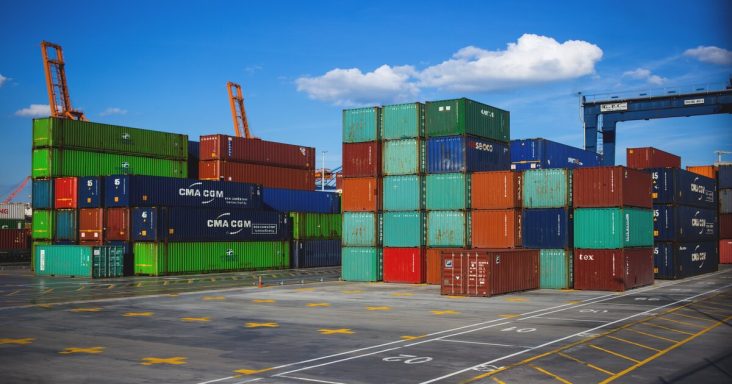Report: Retailers should broaden approach to address supply chain issues
by December 9, 2021 3:03 pm 748 views

Retailers seeking scalable, long-term success in global markets should account for the first 10,000 miles of the supply chain while focusing on and investing in e-commerce platforms and last-mile delivery, according to a recent whitepaper.
The whitepaper by Bamboo Rose and Columbus Consulting provides retailers with guidance on the processes, skills, technology and strategies needed to grow, compete and achieve profitable omnichannel sales as the industry adapts to the COVID-19 pandemic.
Executives believe technology will be important to resolving supply chain issues that have developed amid the pandemic. According to a recent Ernst & Young survey, 64% of supply chain executives expect digital transformation will accelerate because of the pandemic.
The whitepaper shows that retailers “are struggling to source, develop and deliver product as their traditional suppliers and supply chain networks are upended by geopolitical and macroeconomic instability.” Meanwhile, consumers expect the products to be delivered in days. However, inefficiencies throughout the supply chain, starting with product development, can be costly and contribute to delays that build throughout the product lifecycle.
“This way of doing business can be equivocated to trying to navigate an aircraft carrier in a race against speed boats,” according to the whitepaper. “By the time major retailers design and deliver products to their exact specifications, more agile competitors have already flooded the market with similar goods that eat up consumer spend.”
The whitepaper highlighted the importance of supply chain leaders to manage transparency with colleagues and partners. Retailers should coordinate with domestic and international partners throughout the supply chain and leverage technology and communication efforts to remain on track.
Also, the whitepaper warned of the issues with ordering products too early. It’s not only costly and adds to supply chain backlogs, but it also limits the ability to make corrections based on more recent trends and performance indicators. “Finalizing sizing and color decisions on millions of dollars of merchandise months ahead of manufacturing saddles businesses with production commitments at the SKU-level that don’t align with sales trends, or product that isn’t correctly sized for the market it’s ultimately sold in,” the whitepaper shows. “In the coming years, retailers will need to recalibrate their sourcing and order management strategy to maintain transparency and financial commitments with suppliers and factories while extending design and sell channel decisions much closer to production kick-off.”
By 2025, U.S. e-commerce sales are expected to increase to $563.4 billion, the whitepaper shows. And as multiple sales channels become the norm for consumers, retailers struggle to meet omnichannel demand efficiently and profitably. Since the onset of the pandemic, buy online pick up in store has risen by 208%, and each additional consumer experience adds new challenges and logistics processes.
Retail supply chains will be partly responsible for offsetting the impact on profit margins that comes with supporting new customer experiences and selling channels, according to the whitepaper. Retailers face rising costs, lower profit margins, upset customers and declining market share for those that don’t reconfigure supply chain and logistics operations to support the omnichannel model.
According to the whitepaper, retailers need a multi-enterprise platform to connect all partners and allow for simultaneous collaboration. One area in which retailers can increase efficiency and reduce timelines is during product innovation and development. Retailers with digital sourcing and databases of suppliers were able to capture changing consumer demand as it changed at the onset of COVID. Also, retailers that maintain ongoing transparency on product innovation with overseas partners instead of making overseas buying trips, which were largely canceled because of the pandemic, increase the likelihood that they will find unique products and those of high value.
The platform is expected to help retailers and their partners to better react to issues ranging from carrier capacity constraints to rising raw materials costs, the whitepaper shows. Technology also is available to provide retailers with raw materials, factory capacity and labor while delaying production decisions related to sizes, color, packaging and delivery until updated sales data is available, showing consumer interest and buying behaviors.
The whitepaper highlighted the success of American Eagle Outfitters as the $4 billion retailer and apparel brand adjusted its omnichannel strategy amid the pandemic. It has improved its supply chain’s responsiveness to new selling channels, made its inventory more efficient and maintained in-store experiences as shoppers returned in 2021.
“We already had a blueprint for addressing the challenges, which helped us turn this crisis into an opportunity,” said Shekar Natarajan, head of global inventory, supply chain and logistics for American Eagle. “We completely diversified our operations and reconfigured our network in just four months. We stood up four fulfillment locations across the country, each handling 5-10% of our e-commerce volume and replenishing 100-150 retail stores.
“Our business model is omnichannel, meaning that we have to be close to both the end customer and our store network,” Natarajan added. “Our in-market fulfillment facilities meet both needs very well. We can respond quickly to the customer and quickly replenish our stores as inventory gets sold. We’ve reduced our in-store inventory 23%, from four weeks of coverage to one week, while still meeting sales demand. Our infrastructure can service 95% of the fleet within two days — from allocation to in-store.”
